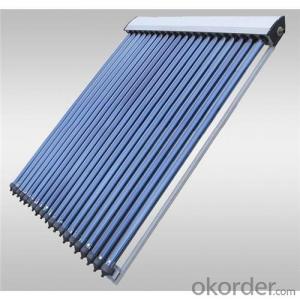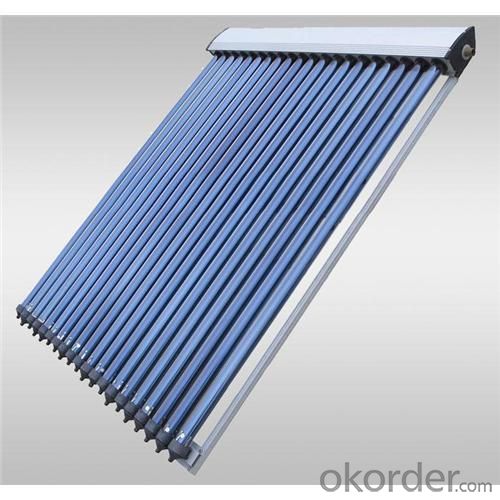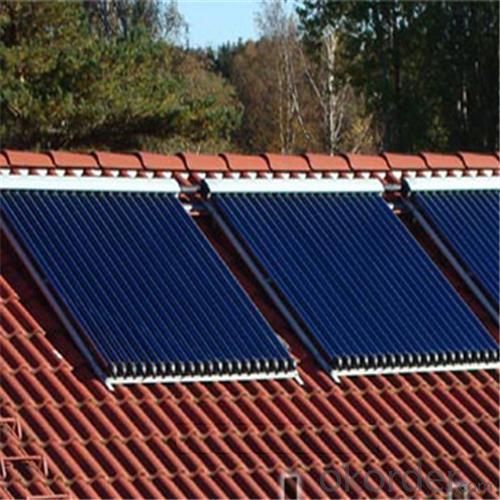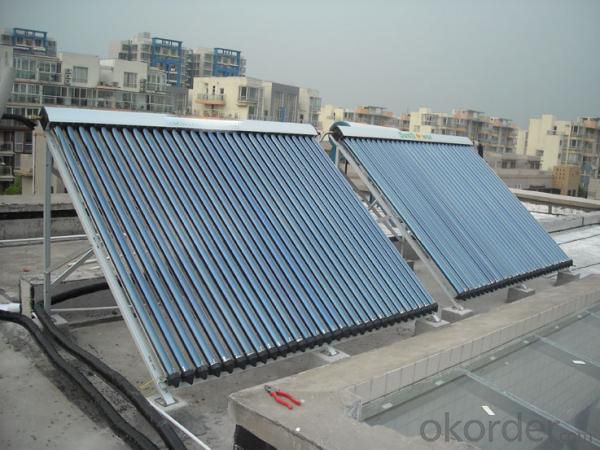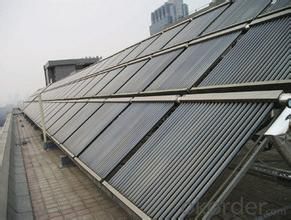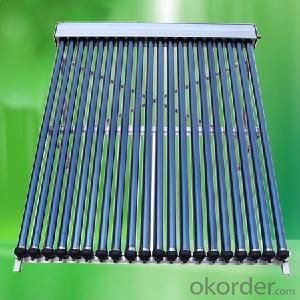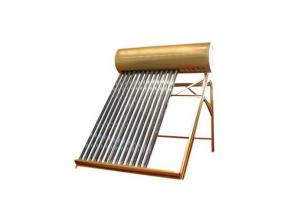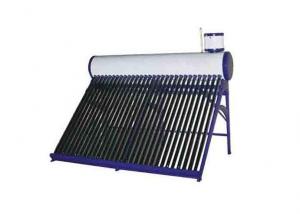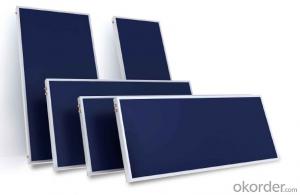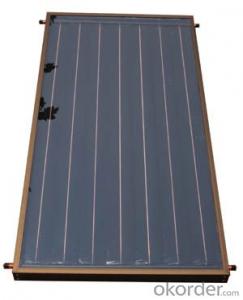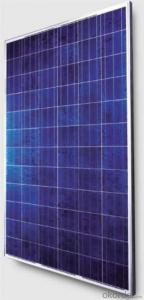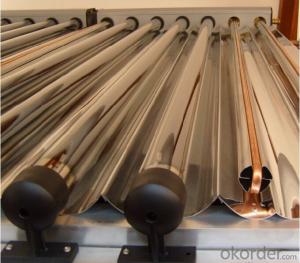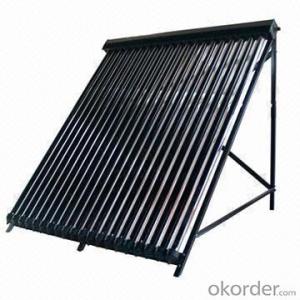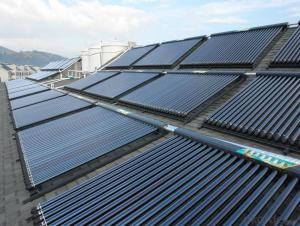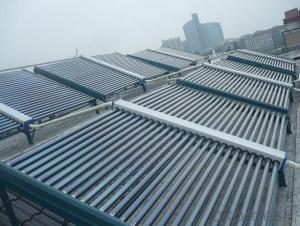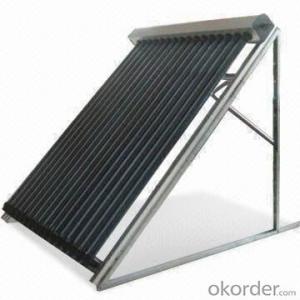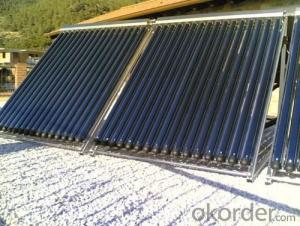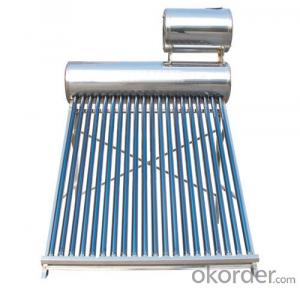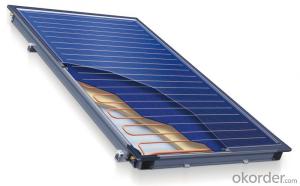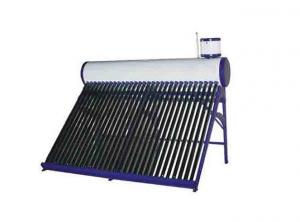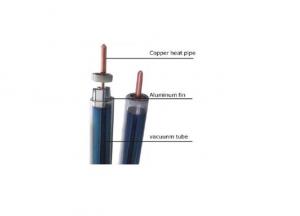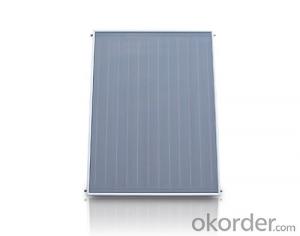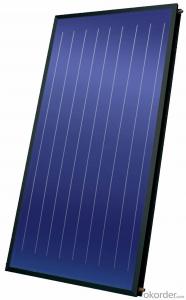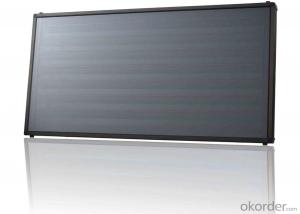Passive Solar Collectors - 20 Tubes Solar Pipes Solar Collectors EN12975
- Loading Port:
- China main port
- Payment Terms:
- TT OR LC
- Min Order Qty:
- 5 set
- Supply Capability:
- 10000 set/month
OKorder Service Pledge
OKorder Financial Service
You Might Also Like
Specification
manifold (inner) | red copper |
manifold (exterior) | aluminum alloy |
glass tube dimensions | 58mm * 1800mm |
daily efficiency | ≥55% |
heat preservation | 72 hours |
hail resistance | 25mm |
max pressure | 7 bar |
coating of vacuum tube | ALN/AIN-SS/CU |
heat pipe | anti-freezing > -35 degree |
certificate | Solar Keymark, EN12975,SRCC |
Serious Product
Models | L*W*H mm | Vacuum tube | Power output | Efficiency | Header mm | Frame | container loading 20FT/40HQ sets | Gross Weight kg |
SHC-8 | 1917*910*133 | 58*1800*8pcs | 939W | 0.668 | Φ35/1.0 | AL alloy | 185/445 | 27 |
SHC-10 | 1917*1130*133 | 58*1800*10pcs | 1189W | 159/385 | 33 | |||
SHC-12 | 1917*1350*133 | 58*1800*12pcs | 1440W | 149/358 | 40 | |||
SHC-15 | 1917*1680*133 | 58*1800*15pcs | 1815W | 120/290 | 49 | |||
SHC-18 | 1917*2010*133 | 58*1800*18pcs | 2191W | 100/242 | 59 | |||
SHC-20 | 1917*2230*133 | 58*1800*20pcs | 2442W | 87/210 | 66 | |||
SHC-22 | 1917*2450*133 | 58*1800*22pcs | 2692W | 83/202 | 72 | |||
SHC-24 | 1917*2670*133 | 58*1800*24pcs | 2943W | 77/188 | 79 |
Packaging & Delivery
Packaging Details: | Exporting Carton with big foaming protection |
Delivery Detail: | In 10-15 days |
Loading Quantity
Model | Tube | Tube Q.T.Y | Loading Q.T.Y/40HQ |
GSC15 | 58*1800mm | 15pcs | 315sets |
GSC18 | 58*1800mm | 18pcs | 265sets |
GSC20 | 58*1800mm | 20pcs | 248sets |
GSC22 | 58*1800mm | 22pcs | 225sets |
GSC25 | 58*1800mm | 25pcs | 200sets |
GSC30 | 58*1800mm | 30pcs | 168sets |
Details of solar collector:
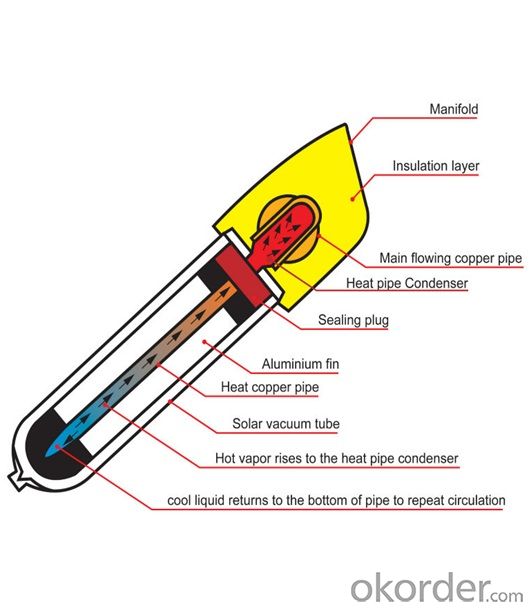
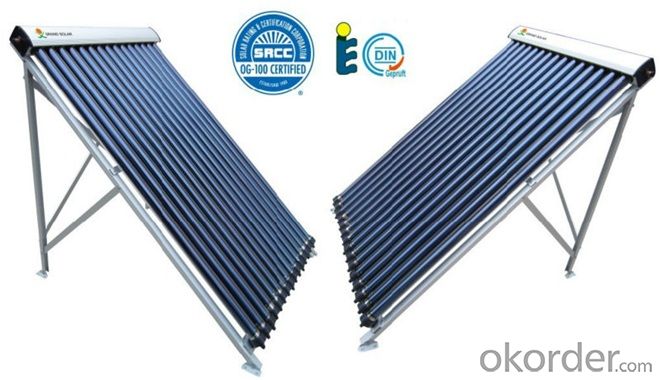

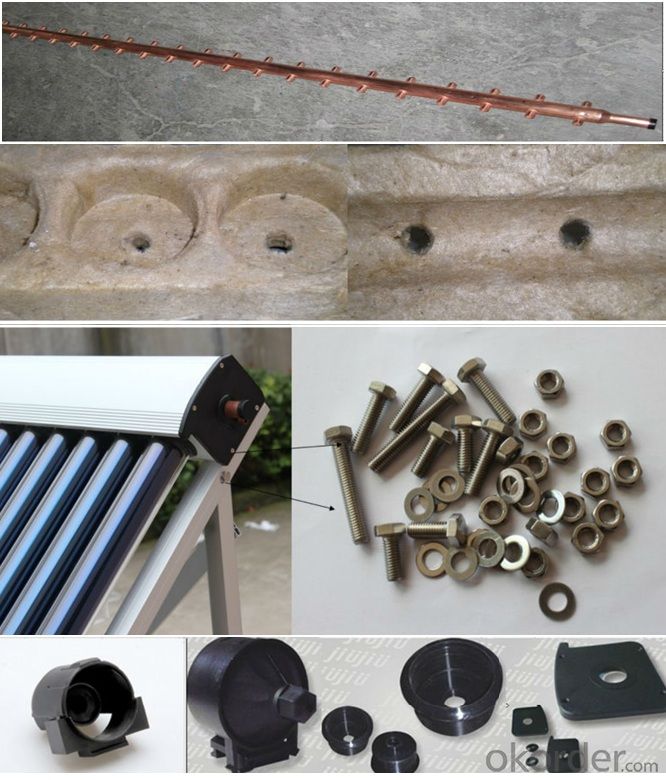
- Q: Can solar collectors be integrated into existing buildings?
- Yes, solar collectors can be integrated into existing buildings through various methods such as rooftop installations, solar facades, or even solar windows. Retrofitting existing buildings with solar collectors allows for the harnessing of solar energy without the need for major structural changes or rebuilding.
- Q: Can solar collectors be used in cloudy climates?
- Yes, solar collectors can still be used in cloudy climates. While the efficiency of solar collectors may be reduced in cloudy conditions, they can still generate some amount of energy from diffuse sunlight. Additionally, advancements in technology have led to the development of more efficient solar panels that can generate electricity even in low light conditions.
- Q: Can solar collectors be used for heating agricultural buildings?
- Yes, solar collectors can be used for heating agricultural buildings. Solar thermal collectors can capture and convert sunlight into heat energy, which can be used to warm up agricultural buildings such as barns, greenhouses, or storage facilities. This can help maintain optimal temperatures for livestock, crops, or equipment, leading to increased productivity and energy efficiency in agricultural operations.
- Q: Can solar collectors be used in combination with desalination systems?
- Solar collectors have the ability to be utilized in conjunction with desalination systems. The power generated from solar energy can be harnessed to operate the desalination process, offering a sustainable and replenishable energy source. Solar collectors, also referred to as solar thermal collectors, can be employed to warm water or create steam, which can subsequently be utilized in various desalination techniques like multi-effect distillation or solar stills. In multi-effect distillation, solar collectors can be employed to warm seawater, which is then evaporated and condensed using multiple chambers to yield fresh water. The use of solar collectors to supply the necessary heat for evaporation can enhance the efficiency of this process. On the other hand, solar stills make use of solar collectors to heat seawater, leading to evaporation. The water vapor is then condensed and collected as fresh water, leaving behind the salt and other impurities. Solar stills are a simple and cost-effective choice for small-scale desalination, particularly in remote areas. The combination of solar collectors and desalination systems provides several advantages. Firstly, solar energy is an environmentally friendly and renewable energy source, decreasing reliance on fossil fuels and minimizing its impact on the environment. Secondly, solar-powered desalination systems can operate in remote areas where access to electricity may be limited. Moreover, solar collectors can provide a consistent source of heat, ensuring a continuous supply of fresh water. Nonetheless, it is crucial to note that the effectiveness and efficiency of solar-powered desalination systems are influenced by various factors such as climate, available sunlight, and the specific desalination technology employed. Additionally, the initial investment cost of installing solar collectors may be higher compared to conventional energy sources. Nevertheless, the long-term benefits of using solar energy for desalination, including reduced operating costs and energy independence, make it a promising and sustainable option for addressing the scarcity of freshwater.
- Q: Can solar collectors be used for heating public transportation stations?
- Yes, solar collectors can be used for heating public transportation stations. Solar thermal systems can effectively capture and utilize solar energy to provide heating for these stations. This renewable energy source can reduce the reliance on fossil fuels and contribute to a more sustainable and environmentally friendly transportation infrastructure.
- Q: Can solar collectors be integrated into building design?
- Yes, solar collectors can be integrated into building design. They can be incorporated into the building's architecture, such as being installed on roofs or facades, to capture sunlight and convert it into usable energy. This integration allows for the efficient utilization of solar power while minimizing the visual impact of traditional solar panel installations.
- Q: What is the best orientation for solar collectors?
- The best orientation for solar collectors is typically facing south in the northern hemisphere and facing north in the southern hemisphere. This allows them to receive maximum exposure to the sun throughout the day, optimizing energy generation.
- Q: Can solar collectors be used to generate electricity for remote communication systems?
- Yes, solar collectors can be used to generate electricity for remote communication systems. Solar collectors, such as solar panels, can convert sunlight into electricity through the photovoltaic effect. This generated electricity can then be stored in batteries to power remote communication systems, ensuring reliable communication in areas without access to traditional power sources.
- Q: Are there any government incentives for installing solar collectors?
- Yes, there are government incentives available for installing solar collectors. These incentives vary by country and can include tax credits, grants, rebates, and feed-in tariffs that encourage the use of renewable energy sources like solar power.
- Q: Can solar collectors be used for heating theaters and concert halls?
- Yes, solar collectors can be used for heating theaters and concert halls. Solar thermal systems can be installed to collect and convert sunlight into heat energy, which can then be used for space heating in large venues such as theaters and concert halls. This sustainable solution reduces the reliance on traditional heating methods and promotes energy efficiency.
Send your message to us
Passive Solar Collectors - 20 Tubes Solar Pipes Solar Collectors EN12975
- Loading Port:
- China main port
- Payment Terms:
- TT OR LC
- Min Order Qty:
- 5 set
- Supply Capability:
- 10000 set/month
OKorder Service Pledge
OKorder Financial Service
Similar products
Hot products
Hot Searches
Related keywords
